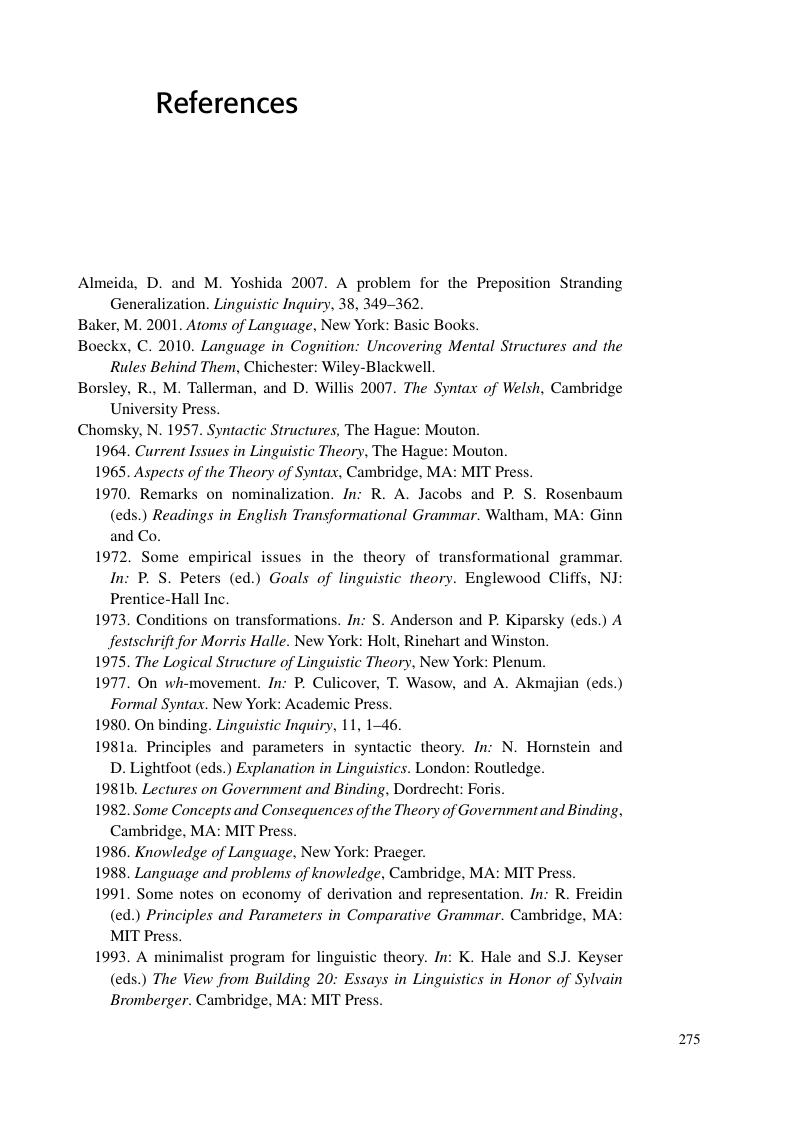Book contents
- Frontmatter
- Contents
- Preface
- Acknowledgements
- 1 The computational nature of human language
- 2 Knowledge of language as an object of inquiry
- 3 Categories and constituents
- 4 Phrase structure theory
- 5 The structure of clauses
- 6 The syntax of Spec-TP
- 7 Head movement and the structure of root clauses
- 8 Wh-movement
- 9 Ellipsis
- Notes
- Glossary
- References
- Index
- References
References
Published online by Cambridge University Press: 05 November 2012
- Frontmatter
- Contents
- Preface
- Acknowledgements
- 1 The computational nature of human language
- 2 Knowledge of language as an object of inquiry
- 3 Categories and constituents
- 4 Phrase structure theory
- 5 The structure of clauses
- 6 The syntax of Spec-TP
- 7 Head movement and the structure of root clauses
- 8 Wh-movement
- 9 Ellipsis
- Notes
- Glossary
- References
- Index
- References
Summary

- Type
- Chapter
- Information
- SyntaxBasic Concepts and Applications, pp. 275 - 279Publisher: Cambridge University PressPrint publication year: 2012



